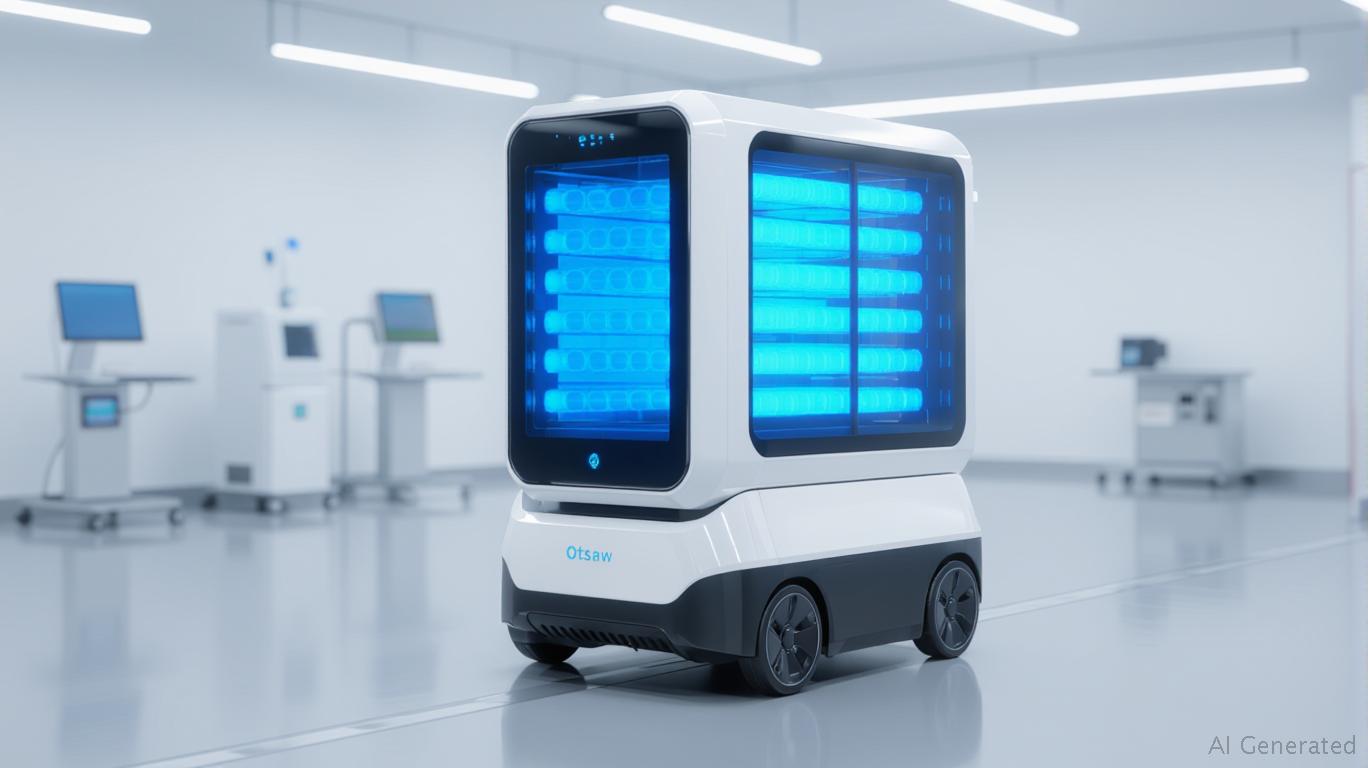Otsaw's IPO: Navigating Risk and Reward in Autonomous Robotics
The robotics sector is at a crossroads—poised for growth but fraught with execution risks. Otsaw Limited's upcoming IPO, despite its declining revenue and precarious financials, offers a case study in balancing speculative potential with operational challenges. For contrarian investors, the question is whether the company's technological edge and strategic bets can offset its current struggles and unlock asymmetric returns.
The Financial Crossroads: Revenue Declines and Cash Burn
Otsaw's IPO filing reveals a company in urgent need of capital: its revenue has been shrinking, losses are widening, and cash burn is accelerating. With just $5.09 million raised through venture rounds since 2018, its balance sheet is thin, raising concerns about its ability to weather operational headwinds. The lack of disclosed revenue figures in its prospectus adds to the opacity, leaving investors to infer trends from critical analysis of its financial trajectory.
The red flags are clear. A valuation deemed “excessive” by analysts, paired with a capital structure that may strain under debt obligations, suggests Otsaw is pricing itself aggressively despite weak fundamentals. For conservative investors, these risks are dealbreakers. But for those willing to parse the details, there's a deeper story beneath the surface.
Technological Edge: Patents, Acquisitions, and Autonomous Innovation
Otsaw's hidden value lies in its intellectual property and strategic moves. Its UV disinfection systems (patent US-20230181782-A1) and 3D environmental mapping technology (US-9870624-B1, US-10096129-B2) position it to capture niche markets in healthcare and logistics, where automation is critical. The 2021 acquisition of Swisslog Healthcare's AGV business expanded its reach into healthcare robotics, a sector with rising demand for autonomous solutions.

The crown jewel is its Autonomous Navigation System (ANS) Version 3, “Odyssey,” which aims to enhance outdoor autonomy and AI integration. If successfully commercialized, this could reduce reliance on human labor in facilities management—a $1.2 trillion global market grappling with labor shortages. The system's potential to cut costs in sectors like healthcare and security could turn Otsaw's revenue tide.
Industry Dynamics: A Tightrope Between Opportunity and Competition
The autonomous robotics sector is booming, driven by labor scarcity and automation demand. Otsaw operates in a crowded field, competing with giants like Relay Robotics (U.S.) and HIT Robot Group (China). Yet its Singapore-based hub provides a strategic gateway to Southeast Asia, a region underserved by Western competitors.
The question is whether Otsaw's niche focus and IP portfolio can carve out a defensible position. Its UV disinfection robots, for instance, could find a unique role in post-pandemic healthcare settings. Meanwhile, its expansion into last-mile delivery—where labor costs are soaring—aligns with e-commerce's growth. The path to profitability hinges on scaling these opportunities without overextending its cash reserves.
Debt Sustainability and the IPO's Pricing Conundrum
Otsaw's thin capitalization implies limited equity relative to liabilities. While specifics are redacted, the term often signals high debt reliance or aggressive equity dilution. The $20 million IPO target must be scrutinized: Is it enough to stabilize cash burn and fund growth, or does it underprice the risks?
Investors should demand clarity on:
1. Debt covenants and interest obligations.
2. Use of proceeds (R&D vs. working capital).
3. Revenue visibility post-IPO—will ANS Version 3 deliver?
Without these details, the IPO risks becoming a speculative play on hope rather than fundamentals.
Asymmetric Returns: A Contrarian Play?
For contrarians, the appeal is this: Otsaw's valuation could be a mispricing. If its technologies succeed in addressing unmet market needs, the upside—especially in a sector primed for automation—could dwarf its current losses. The Swisslog acquisition and patent portfolio suggest a playbook to build a sustainable moat.
However, the risks are severe. A misstep in execution, regulatory hurdles, or a capital markets downturn could leave investors stranded. The key for contrarians is to assess whether the IPO price reflects these risks and whether Otsaw's roadmap offers a clear path to profitability.
Investment Takeaway
Otsaw's IPO is a high-risk, high-reward proposition. Conservative investors should avoid it until financial transparency improves and revenue stabilizes. For contrarians, the opportunity lies in betting on its IP and market positioning—if the valuation is compelling.
Strategic entry point? Possibly, but only at a price that accounts for execution risks. Monitor the IPO's pricing and post-listing performance. If the stock dips on weak fundamentals, it could create a buying opportunity—if Otsaw delivers on its tech promises.
The robotics revolution is real. But for now, Otsaw remains a work in progress—one that requires patience and a stomach for volatility.
Final note: Due diligence is critical. Investors should demand access to Otsaw's full financial statements and clarify its capital structure before committing.
Sign up for free to continue reading
By continuing, I agree to the
Market Data Terms of Service and Privacy Statement

Comments
No comments yet